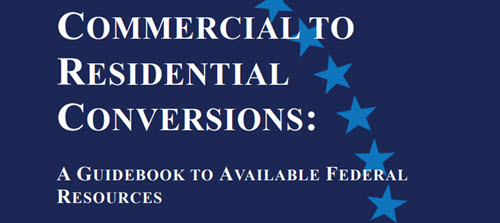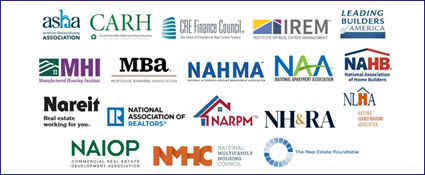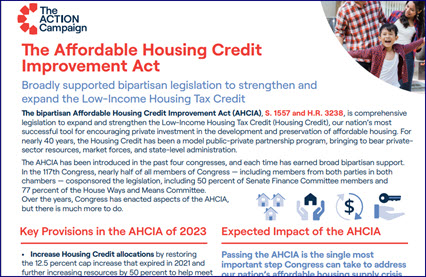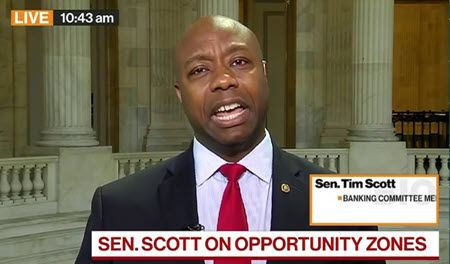
Bills introduced yesterday in the Senate and House would create a new tax incentive aimed at increasing the supply of moderate-income rental housing. The legislation seeks to expand the construction and rehabilitation of housing for middle-class families and young people starting their careers, while enabling workers to live in communities where they are employed. (Senate Finance Committee news release and bill summary, Dec. 7)
Workforce Housing Tax Credit
- Senate Finance Committee Chair Ron Wyden, (D-OR) and Sen. Dan Sullivan (R-AL), along with Reps. Jimmy Panetta (D-CA) and Mike Carey (R-OH), introduced the bipartisan Workforce Housing Tax Credit (WHTC) Act to build on the successful Low-Income Housing Tax Credit (LIHTC) by enabling state housing agencies to issue tax credits to developers, which would subsequently be sold to investors. (1-page Senate Finance committee summary and WHTC bill text)
- WHTC credits could be used to build affordable housing for tenants between 60% and 100% of area median income, or transferred to LIHTC for tenants generally below 60% of area median income. (Congressional Research Service summary of the LIHTC, April 26)
- State housing finance agencies could allocate WHTC credits to developers through a competitive process. The tax credits could also be provided to developers with a 15-year compliance period and 30-year extended commitment. (Committee summary)
- Sen. Wyden’s committee previously held a March hearing on “Tax Policy’s Role in Increasing Affordable Housing Supply for Working Families” focused on the need to expand affordable housing for working families.
Roundtable Support

- The Roundtable strongly supports the WHTC. Roundtable President and CEO Jeffrey DeBoer stated, “Tax policy should support and encourage private sector investment that boosts the supply of affordable and workforce housing. The Workforce Housing Tax Credit Act would build on time-tested tax incentives like the low-income housing tax credit and further facilitate the conversion of underutilized, existing buildings to housing. We welcome this positive step forward for our nation’s housing supply.”
The Roundtable’s Real Estate Capital Policy Advisory Committee (RECPAC) has formed an Affordable Housing Working Group, which is working with the Research Committee to develop proposals on expanding the nation’s housing infrastructure.
# # #









 Legislation aimed at increasing the nation’s supply of affordable housing was introduced by Senate and House tax writers this week while the National Multifamily Housing Council (NMHC) and National Apartment Association (NAA) offered joint testimony before a March 7 Senate Finance Committee hearing on “
Legislation aimed at increasing the nation’s supply of affordable housing was introduced by Senate and House tax writers this week while the National Multifamily Housing Council (NMHC) and National Apartment Association (NAA) offered joint testimony before a March 7 Senate Finance Committee hearing on “





